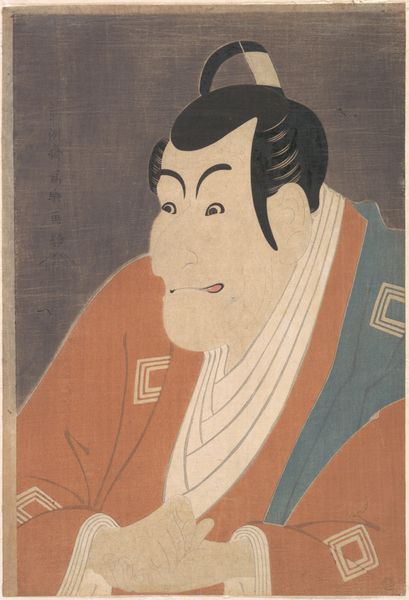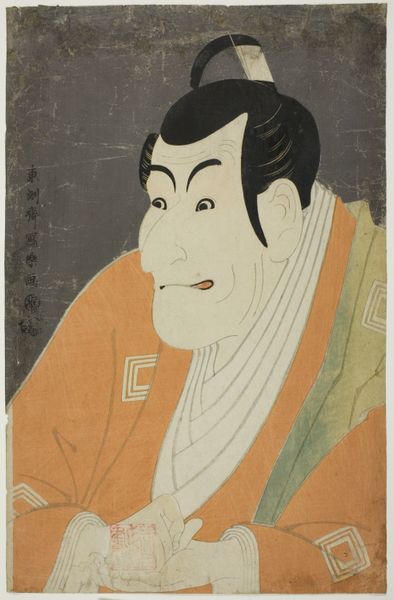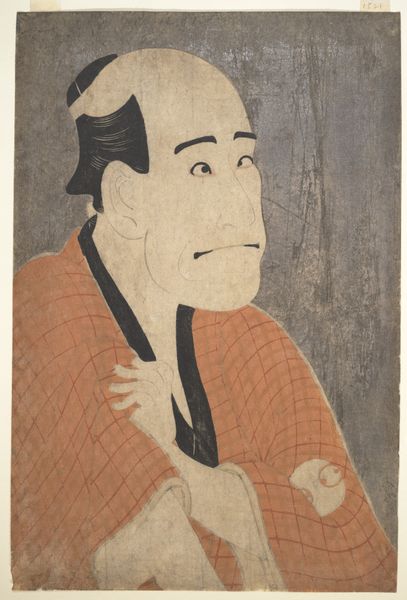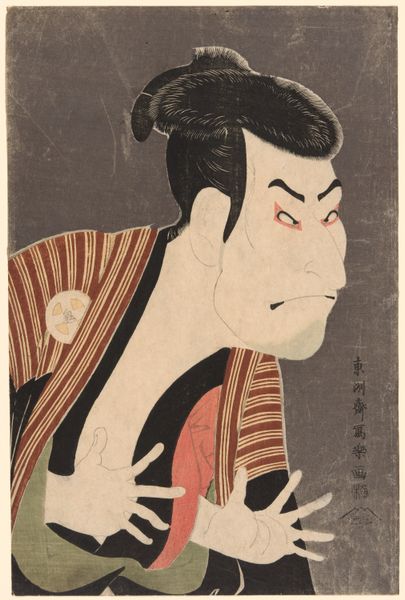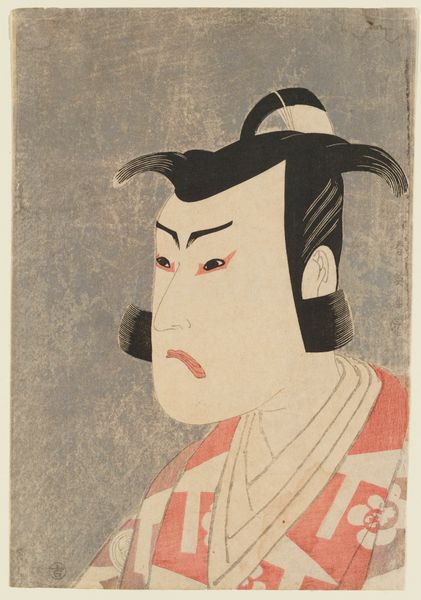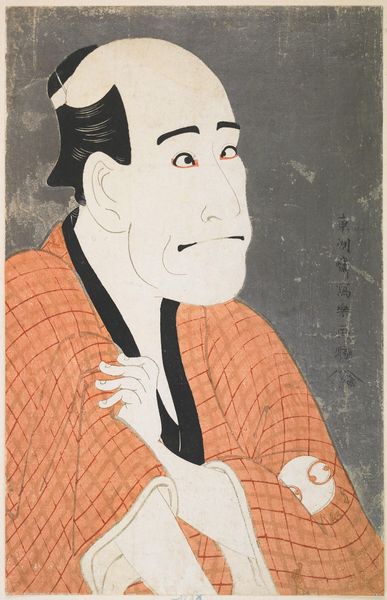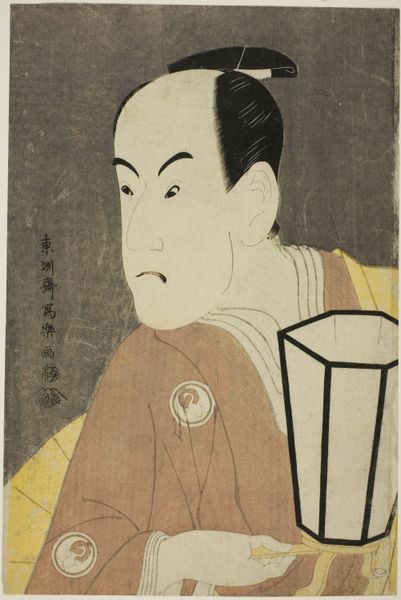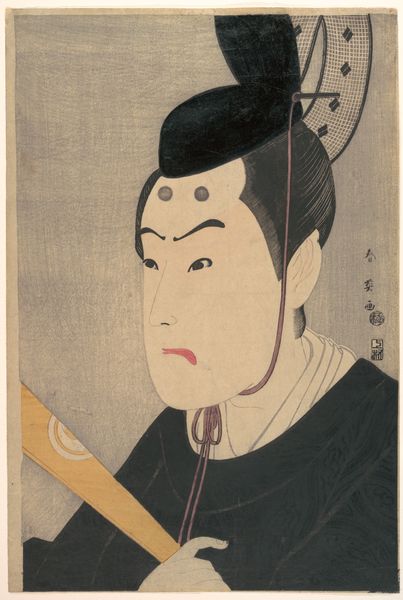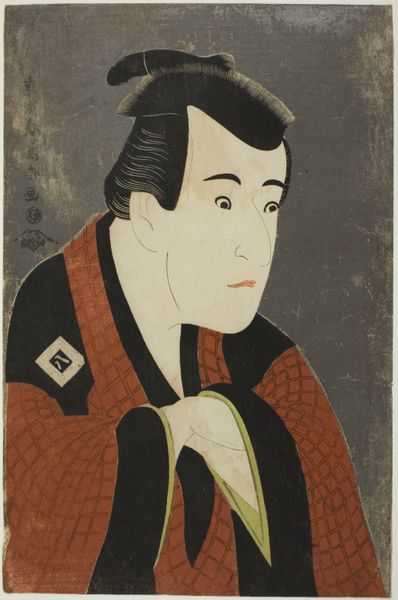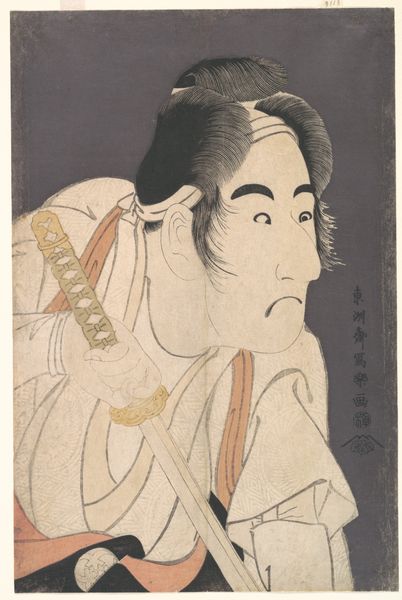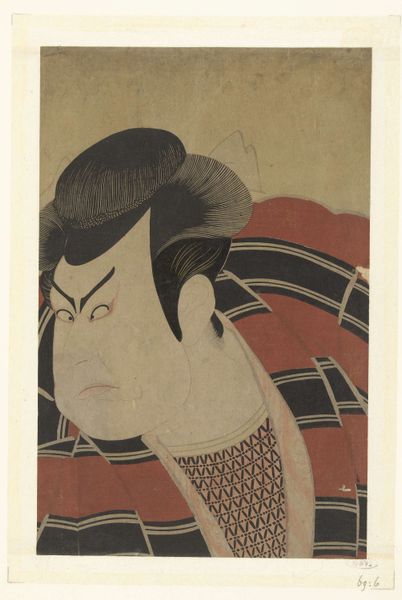
Ichikawa Ebizō IV as Takemura Sadanojō in the Play Koinyōbō Somewake Tazuna 1794
0:00
0:00
print, woodblock-print
#
portrait
# print
#
caricature
#
asian-art
#
caricature
#
ukiyo-e
#
woodblock-print
Dimensions: 14 7/16 x 9 1/3 in. (36.7 x 23.7 cm)
Copyright: Public Domain
Editor: So, here we have a woodblock print from 1794 by Tōshūsai Sharaku, titled "Ichikawa Ebizō IV as Takemura Sadanojō in the Play Koinyōbō Somewake Tazuna," which currently lives at the Met. The actor’s exaggerated features are striking! How do you see the piece? Curator: As a materialist, my eye is drawn to the socio-economic context embedded in this Ukiyo-e print. Consider the materials themselves: woodblocks, ink, paper. These were not the tools of the elite, but rather the means of mass production for a burgeoning merchant class in Edo-period Japan. This challenges the traditional notion of art as solely the domain of the wealthy or powerful. Editor: Interesting! The idea of 'mass production' definitely clashes with my idea of 'high art.' Curator: Precisely. These prints were commodities, circulating widely amongst the common people, depicting popular subjects like Kabuki actors, such as this Ichikawa Ebizō. It’s crucial to ask, who was consuming these images? And how did this consumption shape their perception of art, celebrity, and even social hierarchies? Editor: So, the caricature-like features weren't just artistic flair, but part of a broader system of representation and consumption? Curator: Exactly! Sharaku’s style, with its stark lines and unflattering portrayals, wasn’t just a neutral depiction; it was actively engaging with, and potentially subverting, the established norms of portraiture within a commercialized art world. Think about the labor involved: from the artist designing the print to the block carvers and printers reproducing it. Every stage reflects a social and economic relationship. Editor: I never thought about art that way. Looking at it now, the materials and the production process really highlight the social and economic implications embedded within the image. Curator: And that understanding gives the piece a whole new layer of meaning, doesn't it? It pushes us to consider not just what is depicted, but how and why it was made, distributed, and consumed.
Comments
No comments
Be the first to comment and join the conversation on the ultimate creative platform.

